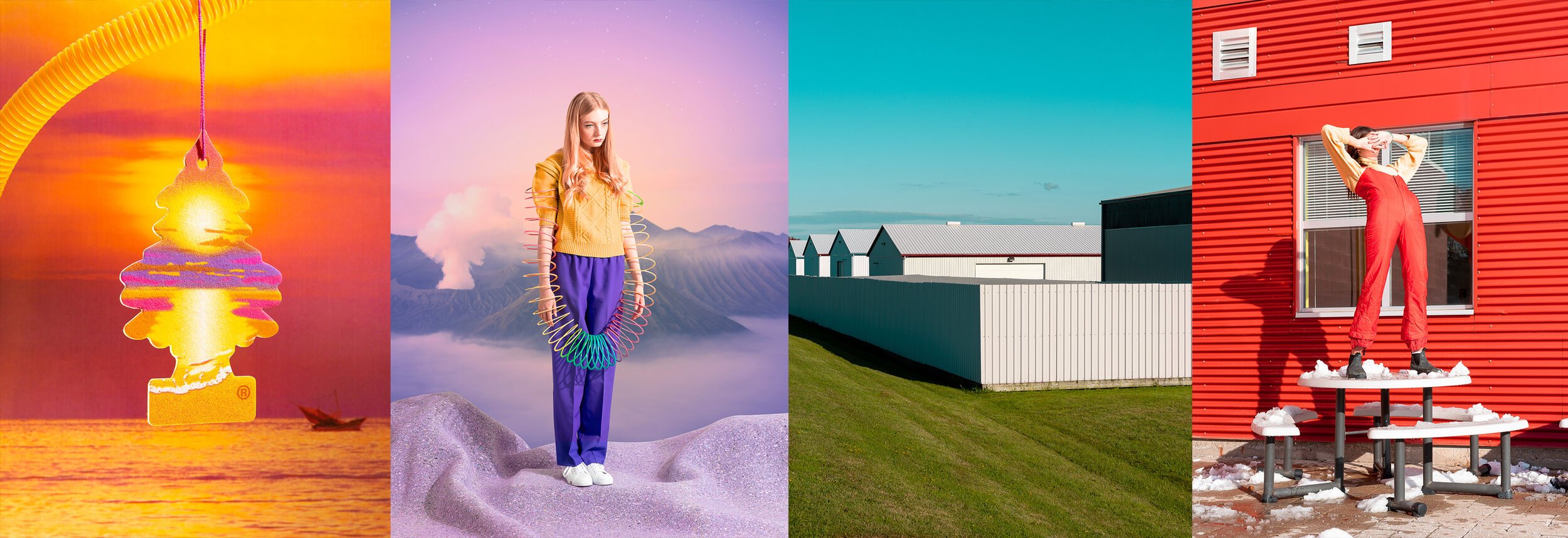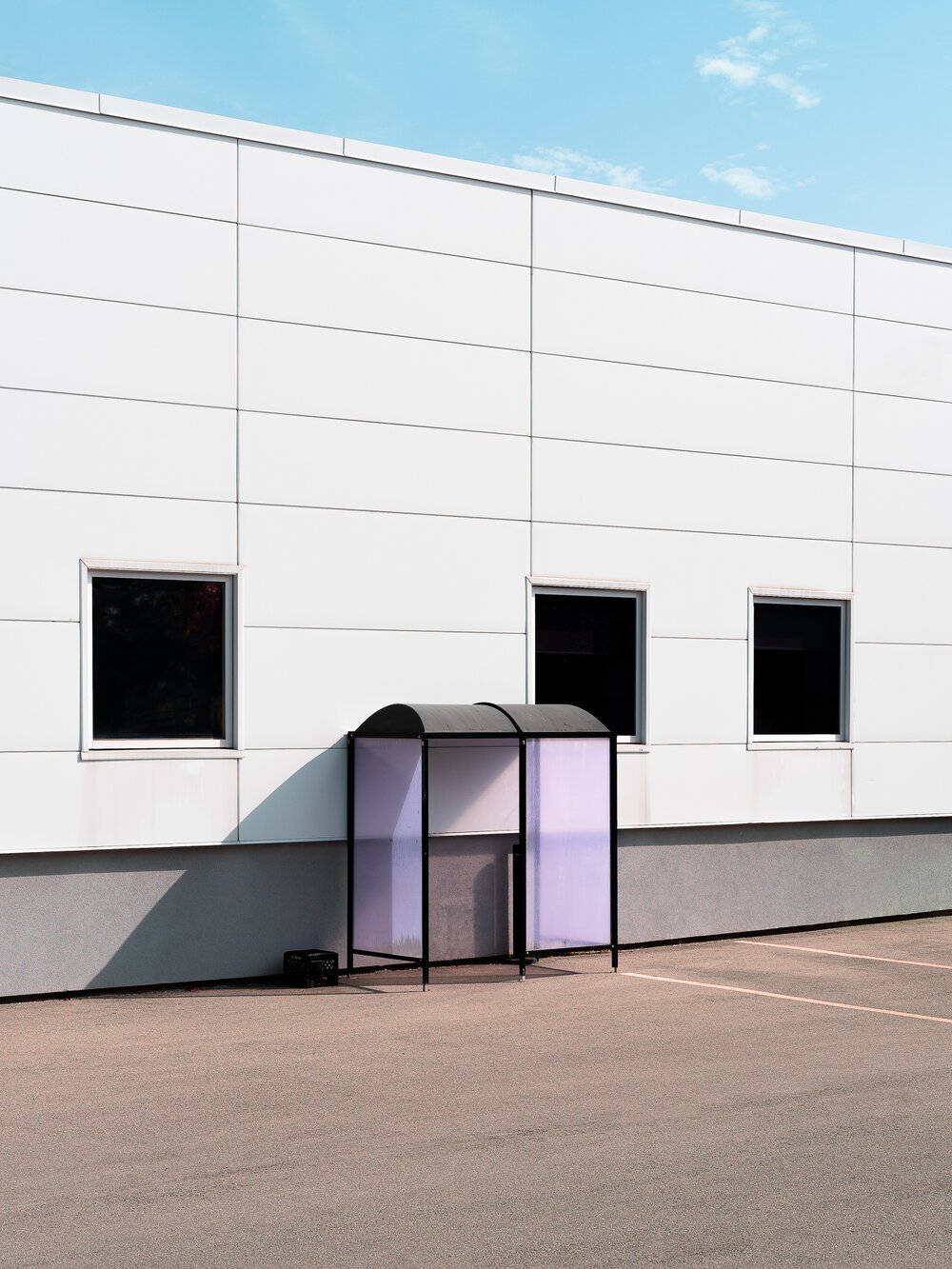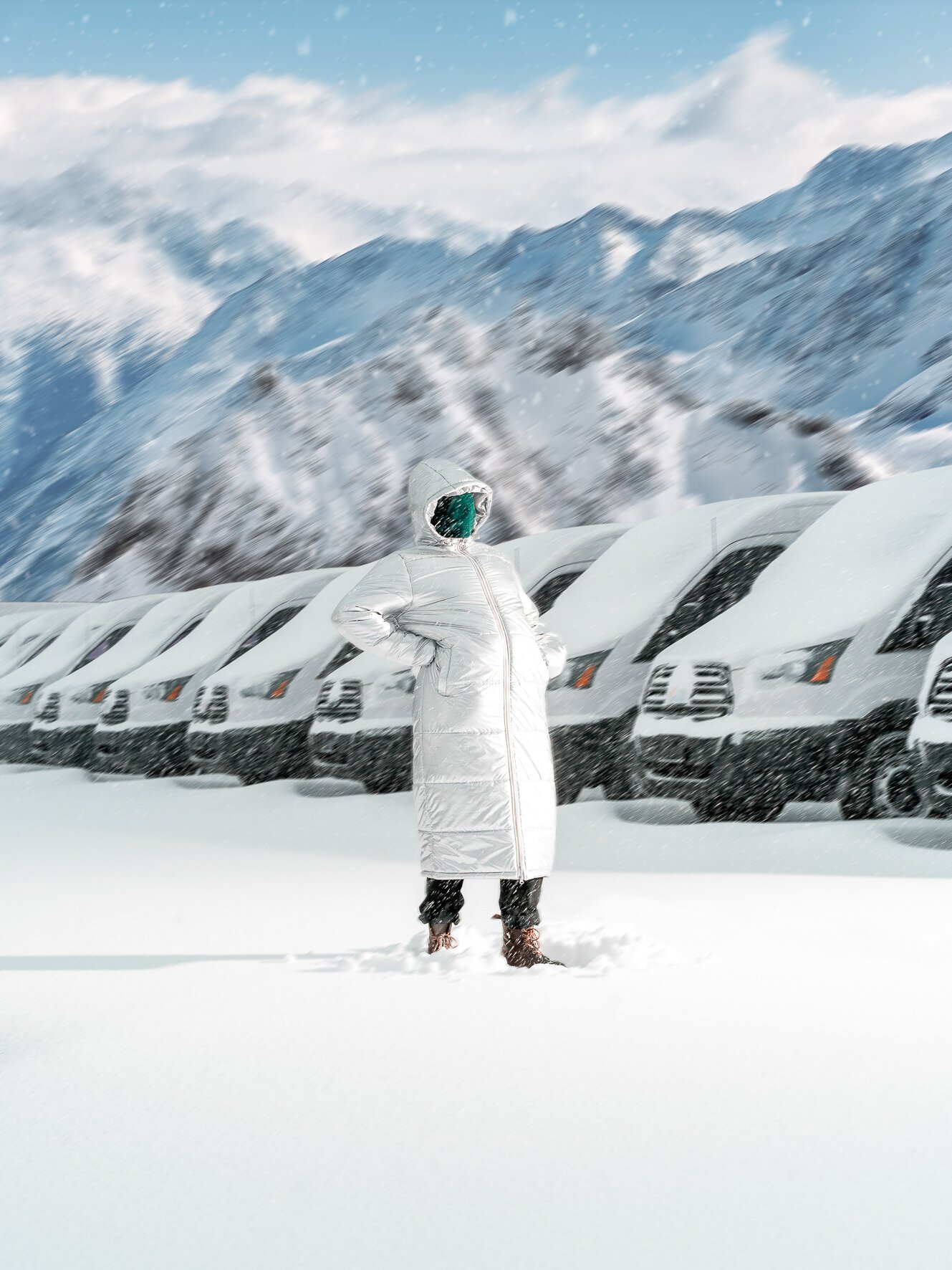Kyle Jeffers: Now What?
July 22nd, 2020
Photographer Kyle Jeffers first picked up a camera to shoot images of his friends skateboarding, but quickly turned his lens on the urban landscape of his native Hamilton, Ontario. Otherworldly, surreal and full of humour, Kyle’s images enjoy an inimitable sense of fun. We spoke with Kyle to find out more about his background, uncanny landscapes and what’s drawn him explore more of photography, as he expands his vision to fashion, portraiture and still life.
POL: First up, can you introduce our readers to who you are, your background and how you got into photography?
KJ: My name is Kyle Jeffers, I am from a small town near Hamilton, Canada. I just completed my bachelor’s degree in photography this spring and am beginning to work in the industry. I got into photography through skateboarding. It has been one of my passions since I was 11. With my group of friends, we would create skateboard videos and take photos of each other skateboarding throughout high school. I found a strong interest in making images at the locations we would find while skateboarding.
POL: You initially became recognised for your architectural photography, we’d love to start there when looking at your work. With your landscape/urban photography, the spaces you capture come across as almost unreal (existing in an “uncanny” plain rather than the day to day world) but are in fact documentary shots, in the sense that they are found locations. How do you discover the locations you shoot?
KJ: I find that the locations I work with are both unreal and real. They are places almost everyone has encountered before, but never really took the time to appreciate their beauty.
Where I live in Ontario it is a mix between massive suburban housing and small industrial/retail areas. I found that just exploring around these industrial areas you would find all these interesting, unique places, something you would never be able to find in cookie-cutter suburban areas.
POL: Your work is incredibly graphic yet minimal, and you also often shoot locations in a way that abstracts recognisable forms, what has influenced and helped you refine this aesthetic?
KJ: I have found just looking at other people’s work a huge influence on how to shape my photographic style. When I started out, I was very drawn to minimal imagery and I was able to find a community of photographers on Instagram that worked in that genre. Being able to have a constant flow of people sharing work that I was drawn to, really helped me see locations in new ways.
POL: When shooting landscapes you appear to be drawn to locations where nature is breaking into the urban, and images rarely have any human presence, creating a stillness and sense of past/memory. You’re taking your images mostly around Hamilton in Ontario, is there something about this location which lead you to create these strangely nostalgic images?
KJ: Hamilton (aka Steel city) is a city that is well known for its steel factories and manufactures. Being filled with all these plants and industrial sites, Hamilton is a hard-working city. Creating work that doesn’t show a human presence in these spaces definitely creates a stillness to spaces that are constantly chugging away.
POL: Your colour choices are incredibly bold in your work. What draws you to specific colour pallets? How much of the colour in your imagery is part of the raw image and how much comes from post-production?
KJ: I really enjoy bright, bold colours. I wear loads of bright tones all the time and I think that reflects in my work. The colours connote optimism and curiosity, which relates greatly to what I aim my work to say.
The majority of the colours in my imagery are from the raw image. I like to keep the work as real as possible. I mainly just tweak around with the hues. There are some occasions that colours do get completely changed, but I aim to make it still feel realistic and only do it to benefit the imagery.
“The majority of the colours in my imagery are from the raw image. I like to keep the work as real as possible. I mainly just tweak around with the hues.”
POL: Alongside your landscape work you also shoot a type of fashion photography - how did you transition from being mostly landscape based, to taking images of people?
KJ: The fashion/portrait side of photography had always been something I was interested in and what I would look at the most. It was always a genre I wanted to explore. I found that with fashion, I really was interested in finding ways to incorporate location into the work in a way that it would be able to drive a story along with the subject you’re documenting.
With my experience photographing mainly landscapes, I found the transition to be quite exciting. I wanted to be able to find a way to still have my style of landscape work be a large part of my fashion imagery, and finding a happy medium between the two drove me to work and find a way to do so.
POL: One of the fun things about your work shooting the figure is that the body is used in a very expressive way, but faces are rarely seen. Why have you focused on constructed actions and postures over facial expressions?
KJ: When I started to transition into photographing people, I found it interesting using the human figure in a similar manner as an object I would find out shooting landscape work. I like the way the shape of the body can be manipulated and contorted into obscure poses that can create a relationship between the subject and surroundings.
Although faces do appear every once in a while in my work. I find that keeping the face hidden adds more of an intrigue to the imagery.
“I find that the locations I work with are both unreal and real. They are places almost everyone has encountered before but never really took the time to appreciate their beauty.”
POL: You’re still an incredibly young photographer, where do you see your work going next? Have you got any plans for the next few years?
KJ: Over the next few years, I am aiming to start working in the editorial and advertising side of photography. I really want to continue on expanding my work and trying out new things. I have recently been really into shooting products and small objects that I have laying around my house.
POL: What are you working on right now?
KJ: With all this uncertainty going on in the world right now, I have been focusing on working with still life to keep myself thinking creatively. I have been really enjoying the change in pace and being able to create everything on my own, over finding my compositions like I do with landscapes.
I am aiming to keep pursuing working with still life and product photography and find ways to bring elements of my landscapes into the work.
About Kyle Jeffers
Kyle Jeffers works with the industrial landscape of Ontario, Canada to create sculptural images that dance around pylons, crates, and warehouses. He has developed a singular style where shape, light and colour come together in sharp, precise contrast. His vibrant, graphic, artfully structured images reveal places and things in a new light. His compositions invite us in with humour and otherworldliness, nostalgia and the avant-garde.
















